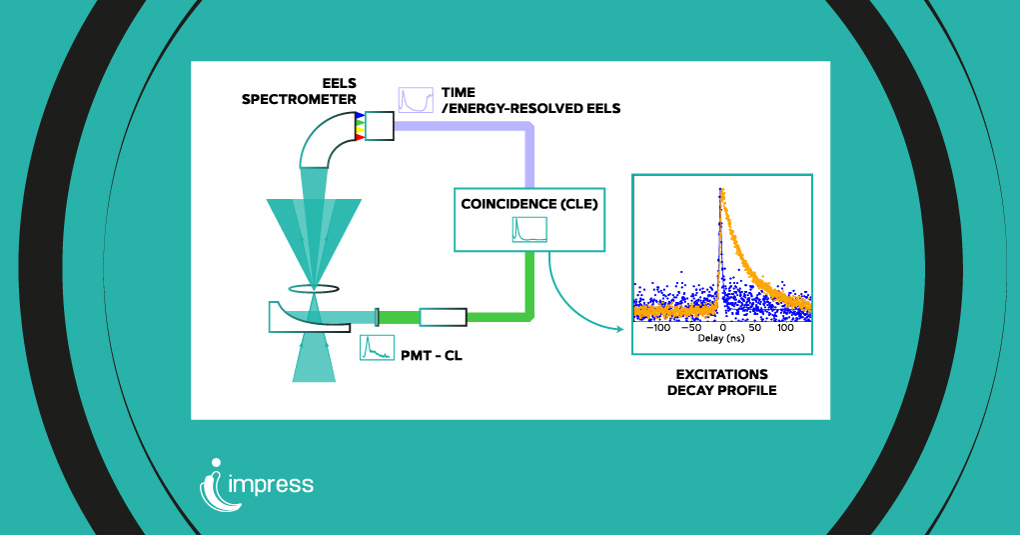
An innovative tool to unlock the secrets of excitation lifetimes

In the realm of nanoscale research, understanding the intricacies of excitation lifetimes is crucial for advancing material science and nanotechnology.
A recent study has unveiled a novel method for measuring excitation decay times in materials using cathodoluminescence excitation (CLE) spectroscopy. This finding is set to advance our understanding of material properties at the nanoscale.
Revolutionizing spectroscopy techniques
The study focuses on the innovative use of cathodoluminescence excitation (CLE) spectroscopy to measure excitation decay times in materials. By analyzing electron-photon temporal correlations, researchers can now access detailed information about the internal electronic structures of materials, which were previously hidden in average measurements. This technique is particularly significant for materials with complex excitation and decay channels, offering a new dimension of analysis.
Experimental insights and findings
The study was carried out by a team of scientists from CNRS in France, one of the partners of the IMPRESS project, in collaboration with colleagues from research centers in Taiwan and Japan. The results were published in the journal Applied Physics Letters. To demonstrate the efficacy of CLE, the researchers utilized two well-known insulating materials, nanodiamonds with NV0 defects and hexagonal boron nitride (h-BN) with 4.1 eV defects. The study revealed that the decay times of these materials matched previously reported values, confirming the reliability of the CLE technique. The transition radiations observed in these materials were used to characterize the instrumental response function, which was found to be typically 2 nanoseconds.
Implications for material science
The ability to measure excitation lifetimes with such precision opens new avenues for material science and nanotechnology. By understanding the specific pathways and timescales of excitations returning to their ground state, researchers can develop better materials for various applications, including electronics, photonics and quantum computing. This aligns with the objectives of the IMPRESS project, which aims to enhance the interoperability of advanced research instruments, thereby facilitating more comprehensive studies across different scientific fields.
Highlights and future directions
Looking ahead, the integration of CLE with other advanced spectroscopic techniques could further enhance our understanding of material properties. The ongoing developments in electron microscopy and the introduction of AI-based software for simulation and automation, as envisioned by the IMPRESS project, will likely play a crucial role in these advancements. The study’s findings underscore the importance of interdisciplinary collaboration and technological innovation in pushing the boundaries of material science.
This research highlights several key insights and implications for the field of material science:
- Demonstration of CLE’s capability to measure excitation decay times in materials.
- Validation of CLE’s reliability through experiments with nanodiamonds and h-BN.
- Potential applications in electronics, photonics and quantum computing.
- Future integration of CLE with other spectroscopic techniques for deeper insights.
Final remarks
The results of this study mark a significant milestone in the field of material science by introducing CLE as a reliable method for measuring excitation decay times. The findings not only validate the technique but also highlight its potential applications in various technological domains.
“The IMPRESS project is paving the way for groundbreaking advancements in material science by enhancing the interoperability of research instruments. The integration of CLE with these advanced tools promises even greater insights into material properties and underscores our commitment to pushing the boundaries of scientific discovery”, concludes Luiz Galvao Tizei, Research Scientist at Université Paris-Saclay and IMPRESS WP4 Team Leader.
Publication details
Applied Physics Letters, 2023, 123 (22)
Excitation lifetime extracted from electron-photon (EELS-CL) nanosecond-scale temporal coincidences
Nadezda Varkentina, Yves Auad, Steffi Y. Woo, Florian Castioni, Jean-Denis Blazit, Marcel Tencé, Huan-Cheng Chang, Jeson Chen, Kenji Watanabe, Takashi Taniguchi, Mathieu Kociak and Luiz H. G. Tizei
doi: 10.1063/5.0165473